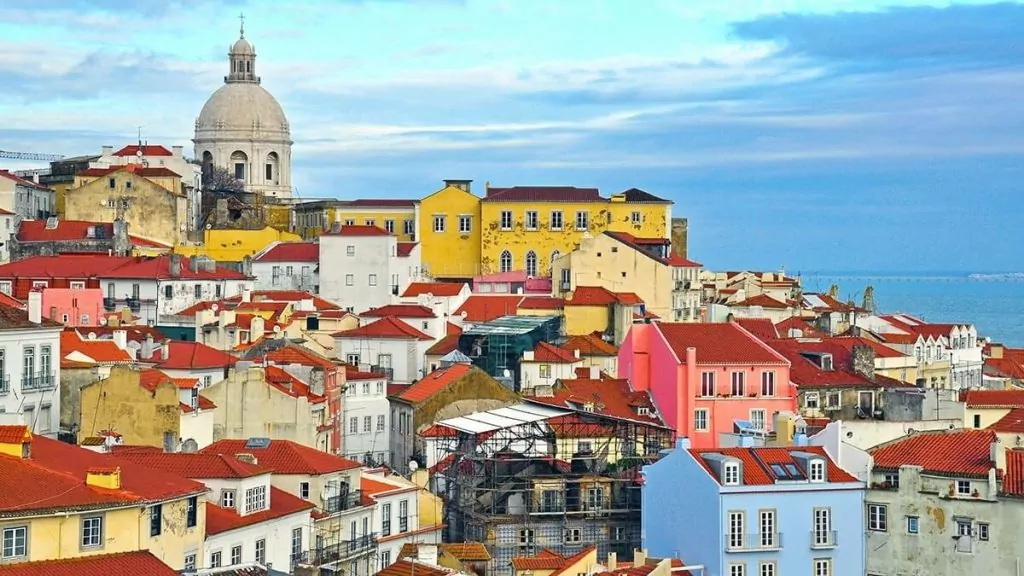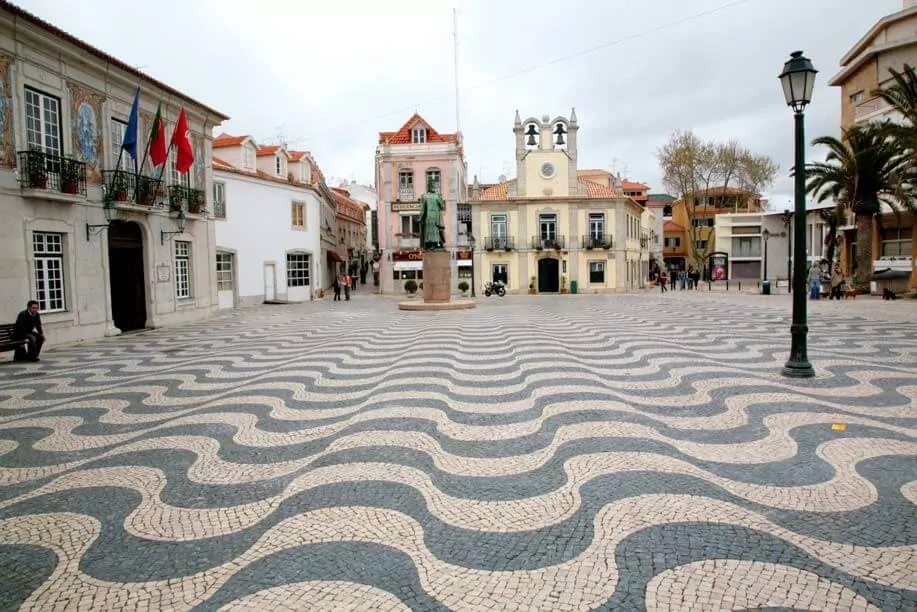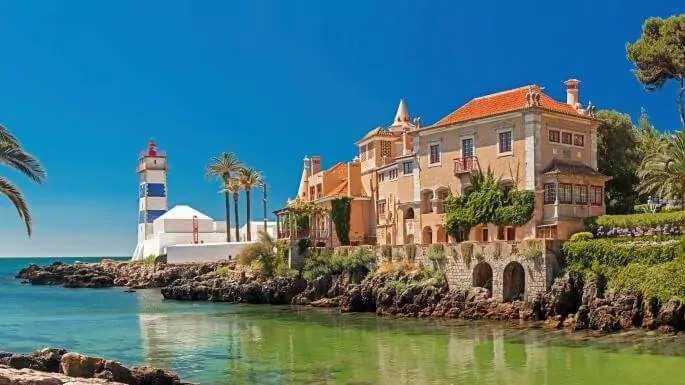Portugal is on the rise. The dark time of stagnation or the occasional 1% value rise is long forgotten. Between 2012 and 2016, home prices rose by 35% in this Atlantic-European country and are currently the highest they have been since 2007. Some areas even enjoyed a 10% bump at the end of 2017.
Portugal’s capital, however, is not enjoying such impressive movement. Lagging Lisbon saw only a 4.9% rise in 2017, fetching an average US$1,750 per square meter.

But Lisbon’s Imperfection Is Her Perfection…
Firstly, let’s put Lisbon’s 4.9% increase into context. In 2007, prices averaged 1,086 euros (US$1,268) per square meter. In 2008, that figure dropped to 1,028 euros (US$1,200). Nowadays, it has not only gone back up, but it has surpassed its previous high. It is destined to keep on rising but, most importantly, the market is still accessible.
In other words, Lisbon is cheap enough to buy now but shows every sign of becoming more expensive—and that is what investing is all about.
Secondly, although most properties are priced around 1,500 euros (US$1,750) per square meter, prices go as high as 7,000 euros (US$8,167). This ample spectrum allows people such as Madonna to get in on the act, along with the average Joe. This city is so desirable even Madge has gone home hunting here. Lisbon’s market is dynamic and evolving rapidly, and now is the time to act.
Residential Opportunities
With the 1,500 to 7,000 euros bracket, your mind can run wild on residential purchase prices. In 2017, the total number of housing transactions rose by 23% compared to 2016.
But what about rental yields?
Rentals range from 4.5% to 6.7% net, with smaller apartments earning proportionately more. Cascais, the museum-packed beach suburb of Lisbon, typically enjoys 6.7% rental return on apartments. Oeiras, an economic hub and suburb of Lisbon, comes in a little lower, averaging 6.15% on family houses. These returns are based on long-term lets.

Short-term lets via Airbnb, for example, tend to fetch higher returns. Tourism and all travel-related revenues account for about 10% of Portugal’s GDP, which grew by 2.7% in 2017. Dubbed “Portugal’s capital of cool” by Spanish broadsheet El País, tourist arrivals in Lisbon in 2017 were up 26%, making short-term lets as attractive as traditional long-term lets.
Why Is Lisbon’s Bubble Set To Keep Growing?
There are no restrictions on foreign property ownership in Portugal. “A quarter of all properties sold in Portugal [in 2017] were sold to foreign buyers,” according to one Portuguese newspaper, and 75% of apartments specifically in Lisbon were snapped up by foreigners. Leading real estate giants Colliers stated, “immigrants from the wealthiest European countries increased more than 80% [since 2010].” A similar trend is found with Chinese immigrants, also up 80% since 2010.
Additionally, transaction costs are generally low. Stamp duty is 0.8% of the property’s value and notary costs come in at 1.2%. Transfer tax (IMT) is 6.5% and in some cases can be avoided through the use of a holding company.
Consequently, foreign buyers, low costs, and an improving economy are why the market is, and will continue to be, roaring.

Taxes Influencing Buyer Profile
Portugal’s wealth tax is calculated according to the value of real estate and is owed on Portuguese property regardless of where the owner resides. However, this is not deterring wealthy foreign buyers.
The wealth tax is due if the property (or share of a property) is worth over 600,000 euros (US$700,051). This is doubled for couples. The tax rates are:
- 0.4% for properties held by a legal entity;
- 0.7% for properties held by a natural person or property under un-administered estates up to the value of 1,000,000 euros (US$1,166,752);
- 1% on the value of the property when the property is in excess of 1,000,000 euros.
However, some legal entities are tax-free. For example, if less than half the company’s activities are agricultural, commercial, or industrial, you may be able to avoid this wealth tax. For example, you could incorporate a legal entity and use it to invest in this truffle opportunity while at the same time make real estate investments in Lisbon, making sure that less than half of the company’s activities are agricultural, and your property could be exempt from wealth taxes.
Additionally, real estate dealing companies are wealth-tax exempt, along with legal entities incorporated in tax havens such as the Dominican Republic (a place we covered in depth in our Live and Invest Overseas Conference in Santo Domingo in April). Property (as opposed to a legal entity) used in tourism or for commercial, industrial, or agricultural purposes is also exempt.
In certain cases, the wealth tax can be offset against income tax payable on rental income. It can also be offset against a company’s corporate tax liability on rental income.
Interest and investment income is taxed at a flat rate of 28% for nonresidents but if you are a resident, you may be able to reduce this. Portugal’s Non-Habitual Residents program provides new residents with attractive tax benefits for their first 10 years. Live and Invest Overseas’ preferred attorney advises on all visas.
Lastly, Portugal has cut crisis-time tax surcharges.
Visa Benefits Influencing Buyer Profile
In addition to Portugal’s Non-Habitual Residents program, the Golden Visa is also available. As discussed at the Live and Invest in Portugal Conference earlier this year, Portugal’s Golden Visa is attractive for those wishing to move part or all of their lives offshore. Offering residency-through-real-estate, the Golden Visa requires a minimum investment of 500,000 euros (US$583,376), cash. This can be in one or more properties. The property can cost more than 500,000 euros but the cash part must constitute half a million euros.
However, half a million is actually a little misleading. If you buy a piece of property that is more than 30 years old, the investment threshold is reduced to 350,000 euros (US$408,363).
If you invest in an area with a low population density (fewer than 100 people per square kilometer), you are eligible for an additional 20% discount, but bear in mind, cities often have a high population density. Nonetheless, taking into account all discounts available, the lowest investment threshold is 280,000 euros (US$325,101).
Will The Bubble Burst?
Now is definitely the time to invest. Supply is having a hard job keeping up with demand, creating a sellers’ market. Ironically now is the time to buy because prices are only going to rise, especially in the residential sector. But how long will this last?
According to one of Europe’s top property developers who works closely with Live and Invest Overseas, markets dependent on foreign buyers are always risky because locals get priced out. Locals are important as they are not fickle; they do not come and go with the fashion.
However, Simon Letter Editor Lief Simon argues, “Certain neighborhoods in Lisbon are probably overpriced based on global standards thanks to the Golden Visa Program and increased tourism, but many areas of Lisbon are ripe for investment… especially renovation projects as more neighborhoods see re-gentrification.”
My Suggested Plan?
Invest in residential property more than 30 years old in Cascais, Lisbon, now rather than later using a legal entity incorporated in the DR.
Samantha Russell

